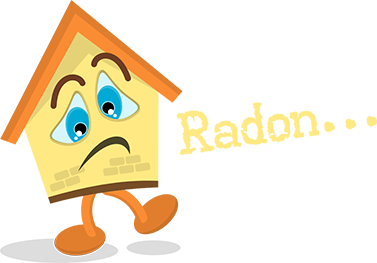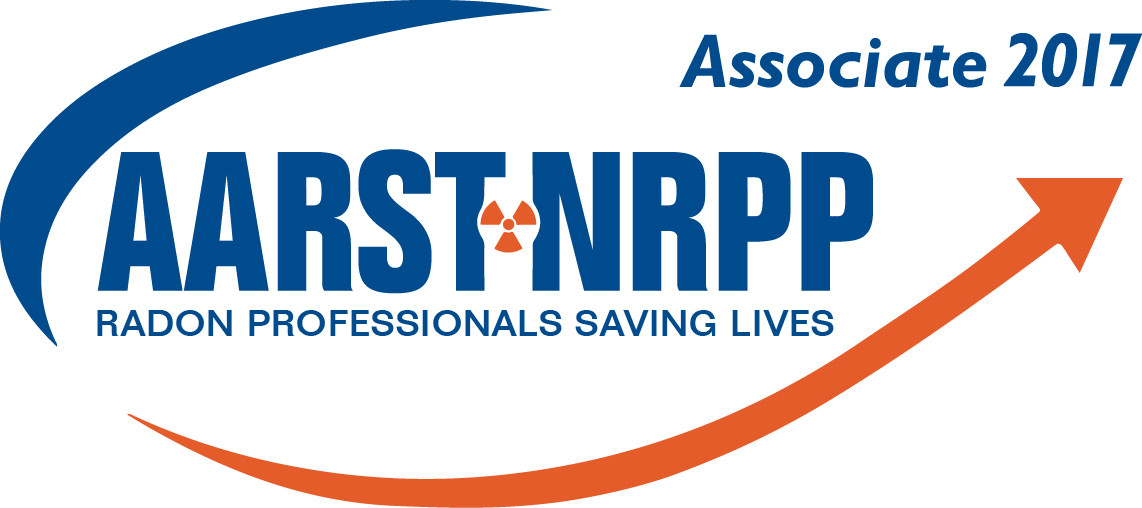
Radon gas is the leading cause of lung cancer, after smoking. It causes 350 deaths per year in Colorado.Radon is a naturally occurring radioactive gas. It enters a home from the soil beneath.About one-half the homes in Denver have unacceptable levels.Radon gas cannot be seen or smelled. Testing the home is the only way to determine the risk.


Our electronic testing system will tell you if the home has a radon problem before you buy.
Get the seller to fix it, not you!
One call does it all. The radon test will be done at the same time as your home inspection.Our electronic testing devices produce quick and reliable results.Fast results, hassle-free.We act as our own laboratory. No mailing of cannisters to a 3rd party lab.Our dedicated radon technician will email you a report as soon as the test is complete.“Self-test” kits take several extra days for processing, which may be longer than allowed by your home purchase contract.
Radon is a radioactive gas found in nature. It has no color, odor or taste and is chemically inert. It’s source is uranium. As the uranium molecule decays to form stable lead, a process taking many, many years, it changes from one radioactive element to another in a sequence known as the Uranium Decay Cycle. Partway through this cycle, the element radium becomes radon which as a gas moves up through the soil to atmosphere. Uranium is found in most soils and in granite.
Excessive radon levels have been found in all of the 50 states. In Colorado between one-third and one -half of the homes have radon levels in excess of the EPA recommended action level of 4 picoCuries (pCi) of radon per liter of air.
Thousands of preventable lung cancer deaths annually in the United States are attributable to indoor residential exposure to radon. Either smoking or radon exposure can independently increase the risk of lung cancer. However, exposure to both greatly enhances that risk. (At exposures to 4 pCi of radon per liter of air, the lifetime lung cancer risk attributable to radon rises from 2 cases per thousand in non-smokers to 29 cases per thousand in smokers).
The risk factors were developed from epidemiological studies of underground miners exposed to radon. Because the studies collected data from human adult males rather than from animal subjects, they have a higher confidence level than is applied to toxicological studies.The Surgeon General, the Environmental Protection Agency, the National Academy of Sciences, the American Medical Association, the American Lung Association and the World Health Organization have all identified indoor radon pollution as a national health problem.
Radon moves from uranium-bearing granite deposits in the soil to atmosphere because there is a lower concentration of radon in the atmosphere than in the soil. Your home is sited in its path and because the house is usually warmer than the surrounding soil, the air pressure is less and soil gases including radon move into the home. The most common routes are:
– spaces between basement walls and slab
– cracks in foundations and/or walls
– openings around sump pumps and drains
– construction joints
– crawl spaces
– showers, etc using well water with high radon concentrations
The age of a home is not a factor when it comes to whether excessive levels of radon are present in the dwelling.
Unfortunately, that is a false assumption. Usually neither the location of the radon source or its strength (radioactivity) is known. In addition, the air spaces found in different soil types allow movement at different rates and we seldom know what those types are 20 to 30 feet below the surface where they act as channels or dams, predicting a radon level in one home on the basis of a tested level in a home 75 to 200 or so feet away becomes radon guessing. The location of ancient stream beds (channel) and of granite out cropping (the source) also compound prediction reliability.
There are many kinds of low cost “do it yourself” radon test kits which may be ordered through the mail or purchased from hardware stores and other retail outlets. Be sure the kit packaging displays the phrase “Meets EPA requirements” or Hire a qualified radon tester. Call2Inspect – 303-730-7233.
No, you will have to do it yourself unless you can persuade him/her to test.
No, there is no legal requirement for him/her to mitigate the radon level.
YES, if you use a kit that meets EPA requirements and you follow the instructions on the label exactly and return it to the lab promptly as directed.
HOWEVER, for real estate transactions you will likely not get the results in time to meet your contractual obligations. For real estate transactions, hire a professional who will have results for you in 48 hours. Call2Inspect – 303-730-7233.
Short-term tests take 60 hours to complete. The house is closed for 12 hours, then the test instrument is activated or opened and left in place for 48 hours or more. Charcoal canisters are the device of choice although electronic instruments may be used. Long-term tests take more than 91 days to complete and are conducted with the house in a normal living mode. Alpha track detectors or electronic detection instruments are used.
Long-term test results give a more representative picture of the true radon levels in the home over time as fluctuations due to changes in ambient temperature and barometric pressure are detected and factored into the final valuation.
Are you wanting to test your home for a real estate transaction or are you are testing for your own purposes? The recommendations are different for the two cases. If you are testing to determine if your home has radon levels warranting mitigation, the EPA recommends testing in the lowest living area of your home. For a real estate transaction, EPA recommends testing in the lowest area which could be modified to become a living area.
Phone Call2Inspect at 303-730-7233. We use a continuous monitor, which permits us to give you test results at the end of the test period.
The only proven health effect caused by breathing radon is the development of lung cancer after years of exposure. You may have radon problems and the only way you can know this is to test the air in your home. However, radon is not what is causing your acute symptoms.
The method of choice is usually sub-slab (or if you have a crawl space, sub-membrane) depressurization. Contact a National Environmental Health Association (NEHA) listed radon contractor to bid on the job. He/she will be able to tell you if your home requires a different approach. Most don’t.
Visit NEHA’s website for a list of certified contractors.
The cost of a sub-slab system in Colorado is generally less than $1000 unless aggregate or difficult foundation design problems are encountered.
Visit NEHA’s website for a list of certified contractors.
Perhaps, if you have good handy-man skills including electrical wiring skills. If you are unsure, it would be advisable to get an evaluation from one of the National Environmental Health Association (NEHA) listed contractors before you make up your mind. Look for Doug Kladder’s “Protecting Your Home From Radon – A Step-by-Step Manual for Radon Reduction” at your local library. If you decide to tackle the job, contact the Radiation Program at 303-692-3300 or 800-846-3986 to get a copy of the EPA instruction manual which contains all the specifications for fans, master panels, etc. Phone numbers and addresses of several supply houses that specialize in mitigation hardware will be included.
No. While caulking and sealing is done as part of the mitigation process, the purpose is not to keep radon out but to hold conditioned air in the dwelling. It is impossible to seal all cracks and the task is time-consuming, expensive and temporary (dries out over time), so this procedure is not recommended as a stand-alone technique.
If you have tested the air in your home and found a radon problem and your water comes from a private well, you should test the water. (Look in the yellow pages for a lab certified to measure radiation in water.)
Generally, radon is not a problem with public drinking water systems because during the water treatment process aeration releases dissolved radon to the atmosphere. However, if the water supply is from a private well, radon levels could be unacceptably high. The recommendation is to test the well water if the air radon concentrations in the occupied dwelling are over 4 pCi/l.
Schools are at risk from radon just as homes are. Colorado statute requires all schools to have tested for radon, and to maintain records of the test results for disclosure on request. The regulation does not require schools that find a problem to mitigate according to a mandated schedule. It is up to the District and its constituents to address mitigation issues. About fifty percent of the schools that were found to have a problem have mitigated.
Further information on radon in schools can be found in the EPA Radon Publication Radon in Schools
